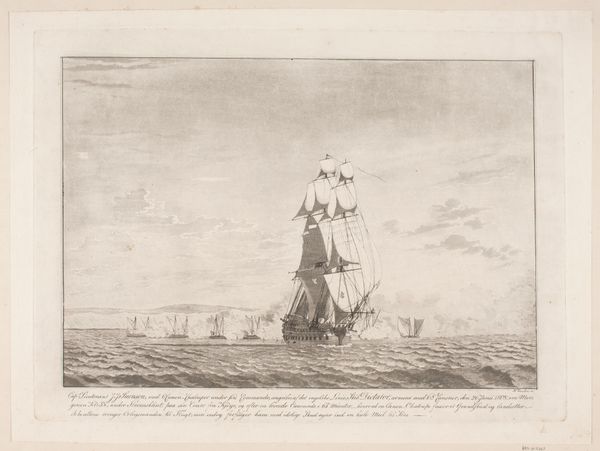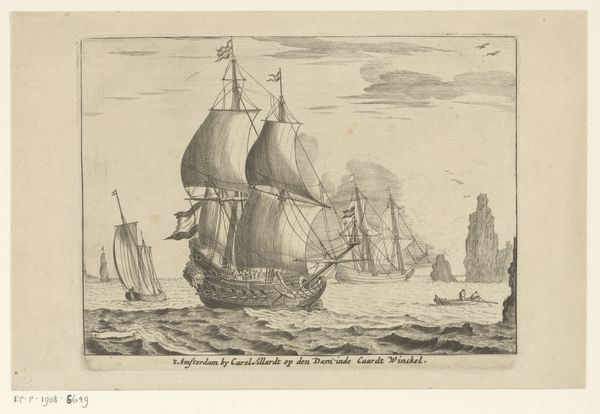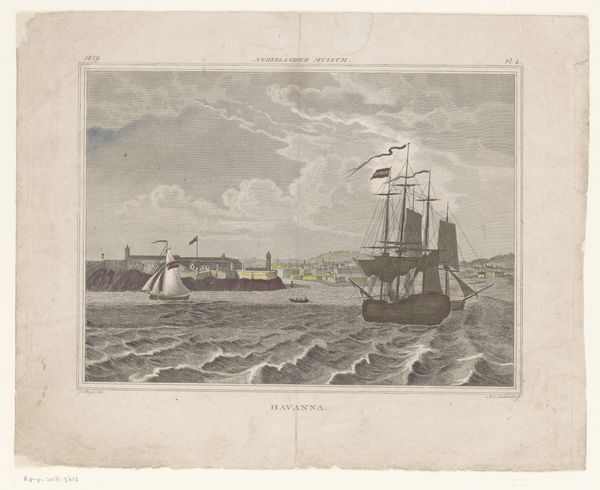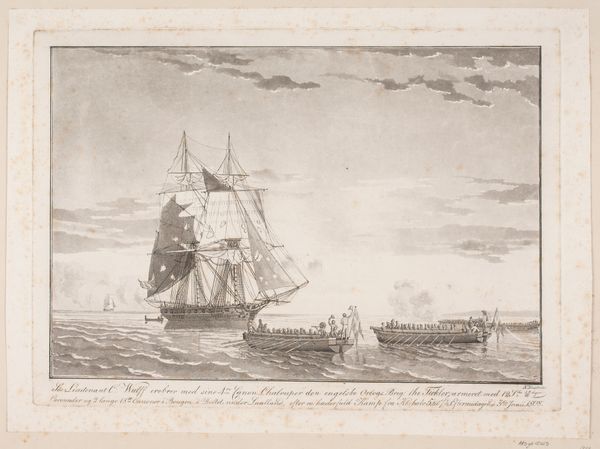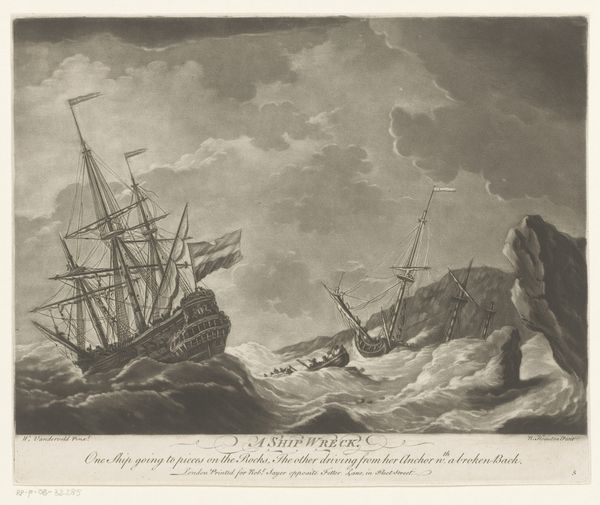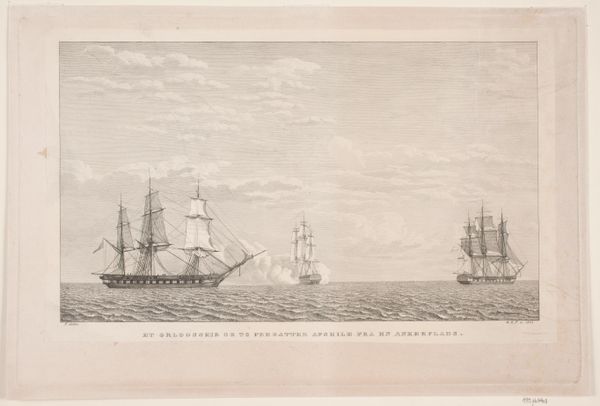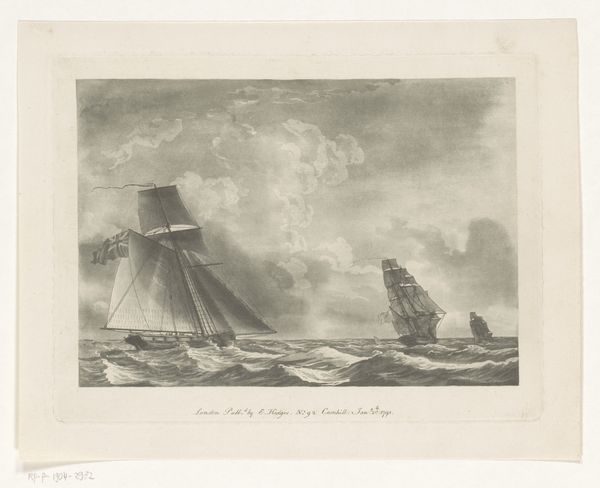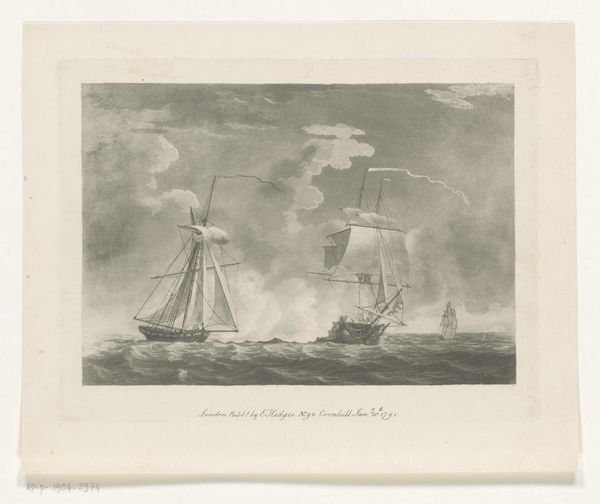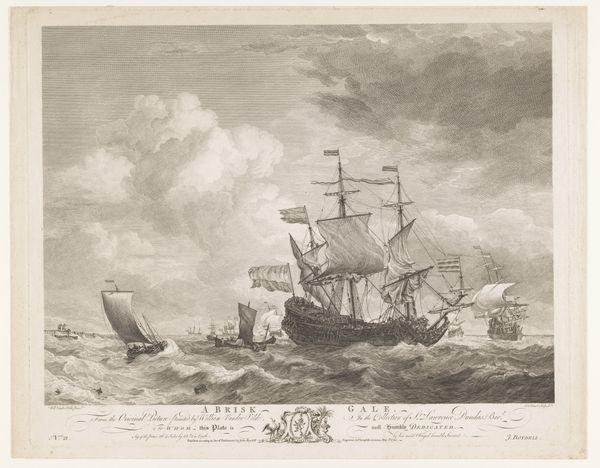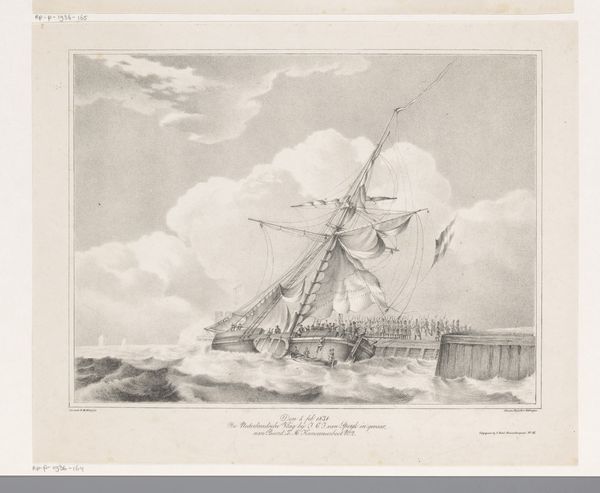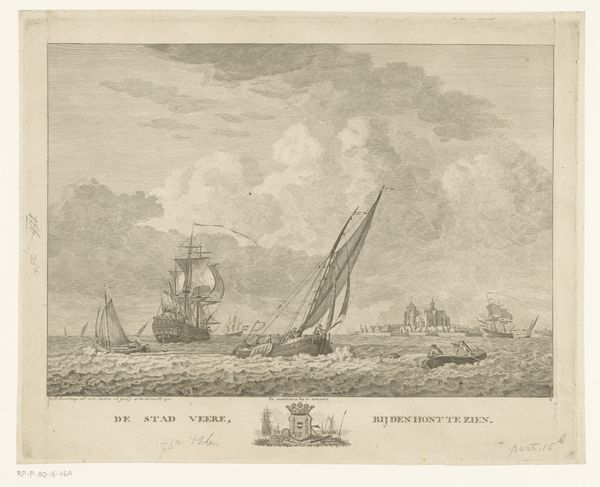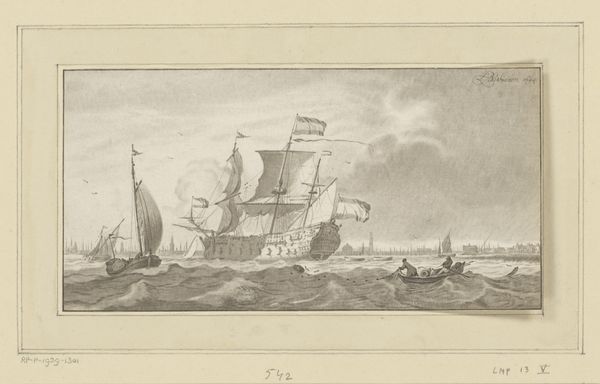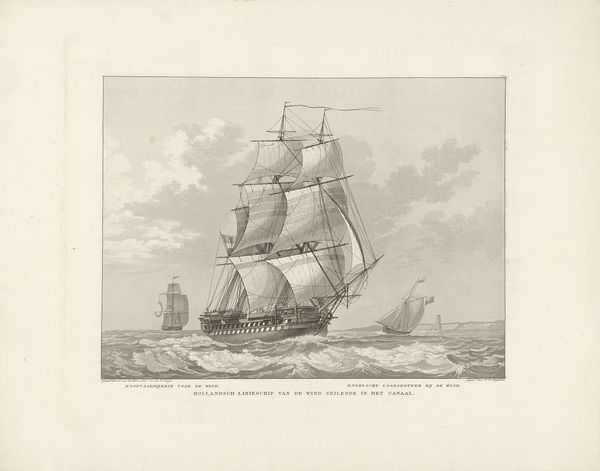
Kampen mellem 6 danske kanonbåde og det engelske linieskib "Dictator" 1808
0:00
0:00
aquatint, coloured-pencil, print
#
aquatint
#
coloured-pencil
# print
#
landscape
#
coloured pencil
#
romanticism
#
history-painting
Dimensions: 325 mm (height) x 447 mm (width) (plademaal)
Curator: Here we have “Kampen mellem 6 danske kanonbåde og det engelske linieskib "Dictator"” created by Niels Truslew in 1808, an aquatint and coloured pencil print, currently residing at the SMK. What strikes you immediately? Editor: The vastness! It's unsettling; the enormous sky and sea dwarf the vessels. The human drama seems so fragile and precarious against nature's indifference. Curator: Yes, Truslew certainly understood Romanticism’s key visual tropes. Note how he’s structured the composition; the low horizon line emphasizes the scale of the English warship "Dictator." The Danish gunboats appear comparatively diminutive, almost overwhelmed by this behemoth and the sublime, empty ocean. The light and colour, that faded sky. Editor: I’m struck by what it suggests about asymmetric power. It’s difficult to overlook the context. This image memorializes an underdog story. Denmark, caught in the Napoleonic Wars, valiantly resisted British naval dominance. What appears as Romantic awe can also read as defiance in the face of impossible odds. Curator: It is also quite interesting as a study in contrast: observe the detail of the rendering of the 'Dictator' alongside the more abstracted, gestural brushstrokes of the smoke and water. There is dynamism at play, almost an intersection of careful maritime record keeping with something looser, perhaps symbolic of the chaotic and destructive power of the war at sea? Editor: And note those traces of colour; the delicate blues and pinks in the sky, heightening the almost dreamlike state of the scene. The aestheticization of conflict; an important act when picturing and trying to justify conflict, indeed, memorialising this particular event. Curator: Indeed, we find ourselves confronting tensions here, a dynamic interplay between aesthetic beauty, compositional elegance, and an engagement with the difficult realities of war, or the politics underpinning national narratives of the time. The work offers considerable room for thought. Editor: A piece that pushes us to reflect on how history and art intertwine, showing us conflict's raw face and art’s reflective capacity. Thank you for elucidating it.
Comments
No comments
Be the first to comment and join the conversation on the ultimate creative platform.
